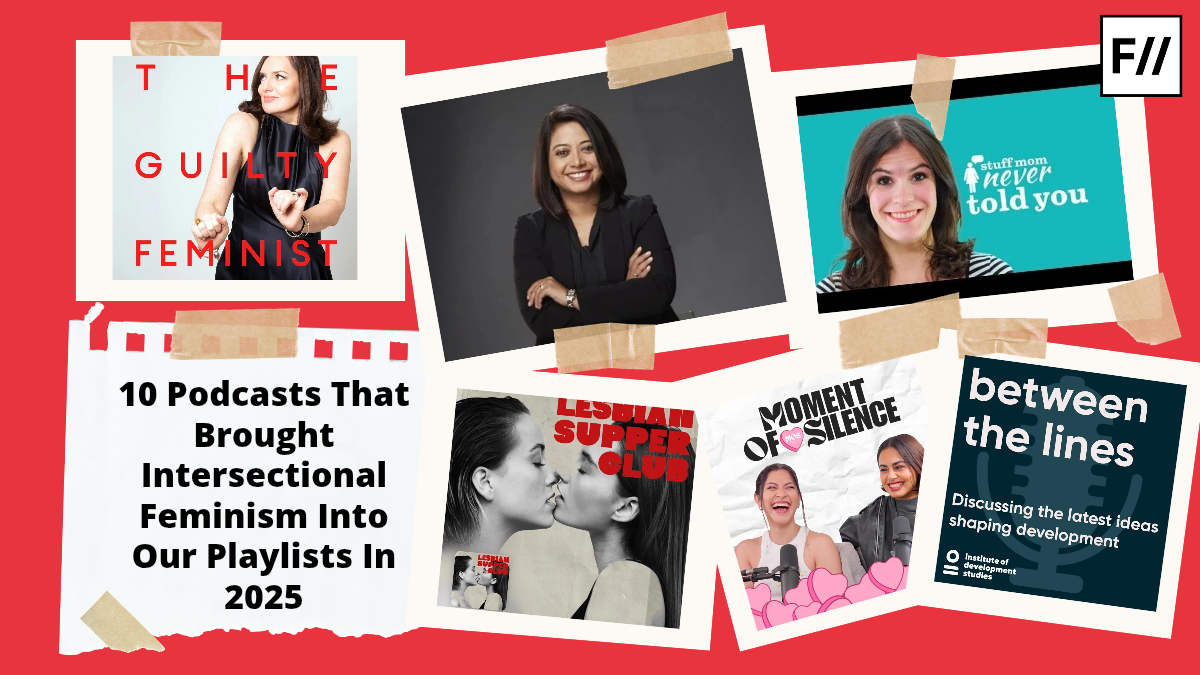Posted by Madiha Iqbal
There has been very little representation of Muslim women in the television world, and in the few that there are, most of them resort to misrepresentation. If we talk about the most famous serials, they are Qubool Hai and Beintehaa.
To start with the backdrop arrangement used in these allegedly pro-Muslim serials, we have huge arcades, never-ending amounts of white marble, delicate curtains, rosaries and religious calligraphy hanging on the walls and women dressed in lavish clothes and enviably perfect kohl. All of them try to imbibe a nawabi mannerism, so you have already lost the fact that they are minorities and have a truckload of issues to deal with in real life.
The next thing to notice will be that Muslim women are never portrayed as women outside of stereotypes; they have a lot of different shoes to fit. The first image is of pure and pious ‘good’ women who are always fulfilling their familial duty. They are the carriers of cultures hence always dolled up in extremely covered dresses, preferably salwar suit and preferably white as the norms (read: stereotypes) for good Muslim women.
One would think they might have never heard of swear words. Ever.
Fact: Islam never mentions salwar kamiz as an Islamic garment. As a matter of fact, there is no dress or colour related directly to Islam. Next, to enhance this all-good image is the dialect and words used by these women. They always speak in very mild tones – which speaks volumes of their obedience, their eyes are always downcast, they consistently use the word “aap” and then there is the trope of thinking too much before speaking with heavy Urdu words – again, to add to the cultural stereotypes.
If you look at it carefully, it’s almost poetic the way they speak. It seems as if they can never say anything wrong. One would think they might have never heard of swear words. Ever. Also, the creation of the typecast that all good Muslim women must be like this – that image intensifies and is reperpetuated in the show Beintehaan.
https://www.youtube.com/watch?v=WIDoCFzLzTM
This television serial focuses on this image continuously for five days a week, one hour a day to imbibe this concept in order to become deep-rooted in our minds. Also, the good Muslim woman has to pray five times a day, maintain complete faith in the Almighty and never tries to escape or avoid any problem.
Also Read: 7 Legendary But Unremembered Muslim Women In Islamic History
The most common thing we notice is that they actually never try to avoid problems, instead have to endure everything and wait for the Almighty to save them. Now honestly, this is just ridiculous (it’s the most subtle way to put it). Nobody in the world tries to encounter problems that they can avoid. No Muslim women simply prays and cries when in jeopardy. She is also a rational woman who will want to try to find a way out.
The second image television tries to paint is that of the revolutionary modern Muslim woman who questions everything and anything, irrespective of the importance of that debate, as is indicated in Qubool Hai. Contrary to the good angel trope, this protagonist is always emotional, speaks a lot and wears western clothes.
https://www.youtube.com/watch?v=rfPN8mZkSEE
This woman also has a duty to perform, to challenge everything in the most aggressive manner possible. She is the complete opposite of anything obedient. She uses English instead of Urdu, she is over-confident, speaks in loud tones, always looks men in the eye and seldom follows tradition.
There is, however, one similarity between the two images: both never seem to try to find solutions for their problems. This woman has to challenge everything, thus encountering problems. This portrayal of trying to be different from the others is so heavy, that we consider a whole community to comprise only these two extreme typecasts.
one similarity between the two images: both never seem to try to find solutions for their problems.
This is definitely not the case. Muslim women can and should be seen as women. They don’t need to have either of the tags stamped on their faces. They can be both and none. It is not necessary for a Muslim woman to be either polite and oppressed or loud and free.
They don’t need to be the symbols of culture. They don’t need to be put into stencils with rigid labels; they can just be ordinary women. We should stop looking at a Muslim woman and then spend time cataloguing which slot she belongs to. Let’s lower the illogical categorization and it will lead to an end of these stereotypes. Let her have a choice of choosing none.
Also Read: Muslim Women In Popular Cinema: A Series Of Flat Characters
Madiha is a 22-year-old student doing her M.A. in Media Governance (second year).
Featured Image Credit: India TV
About the author(s)
Guest Writers are writers who occasionally write on FII.




